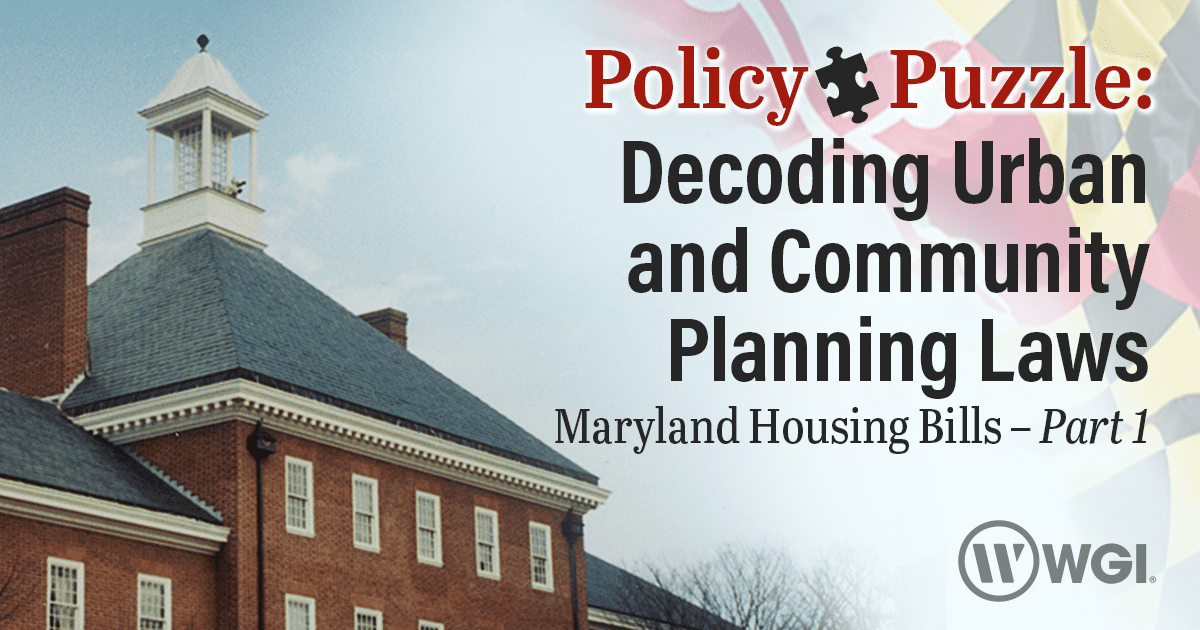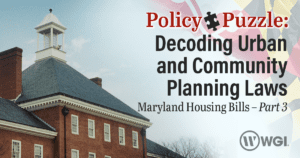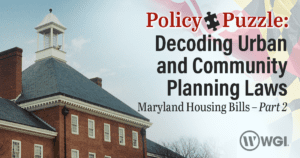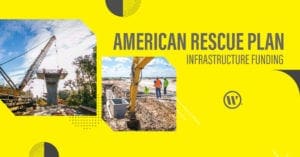
Build Back Stronger: How States and Cities are Recovering From COVID-19
Agility is key — Cities and states that rapidly plan and execute policy and infrastructure plans to uplift communities might be the first to recover. Learn how WGI can help.
Learn from award-winning professionals — explore our whitepapers, blogs, and the latest industry updates.
Join our dynamic organization of engineers, land surveyors, landscape architects, environmental scientists, and architects!
Talk to a market leader today! We’ll answer any questions you have about our professional services.

Welcome to the first installment of our series dedicated to unraveling the complexities of recent and potential state-level urban and community planning policy. State regulations establish the framework for local planning activities and are constantly evolving. We believe that understanding these laws is crucial for anyone interested in the future of our cities and communities. So, whether you are a local government official, city planner, developer, community activist, or just a curious citizen, we hope this series will provide valuable insights.
We first delve into the Maryland Housing Expansion and Affordability Act (HB538), a piece of legislation that the Maryland General Assembly approved on April 9th, 2024, and is expected to soon be signed into law by the Governor. The law aims to expand housing construction, particularly affordable housing, by lessening local zoning and permitting barriers. It requires all local jurisdictions in the state to ensure that their regulations follow three main components.
Maryland has an estimated housing shortage of 96,000 units, and over half of Maryland renters spend 30% or more of their salaries on housing. Due to the urgent nature of this housing conundrum and the complexities of local housing development, addressing zoning and permitting barriers is increasingly becoming one of the pieces of the puzzle.
Residential projects qualify for increased densities if they are new construction or substantial renovations in one of the following locations:
In each case, the project must contain a percentage of dwelling units affordable to households earning 60% or less than the area median income: 15% affordable near rail stations and 25% affordable for nonprofit and former state-owned land. These units must remain affordable for at least 40 years.
If a project meets the criteria above, local jurisdictions must allow a qualified project’s density to exceed that otherwise authorized in a district or zone as follows – A qualified project in an area zoned for:
The bill outlines deviations from the following traditional planning regulations and procedures for qualified projects:
Keep an eye out for subsequent pieces of the puzzle where decoding housing policies continues!
For more information on Maryland’s Housing Expansion and Affordability Act or expert support in planning your next urban and community planning project, Contact Our Team!

WGI is a national design and professional services firm leading in technology-based solutions for the construction of public infrastructure and real estate development. At WGI, we’re providing Tomorrow’s Infrastructure Solutions Today.

Agility is key — Cities and states that rapidly plan and execute policy and infrastructure plans to uplift communities might be the first to recover. Learn how WGI can help.

Breaking Barriers to Affordable Housing: Part 3 of our series on Maryland’s Housing Expansion and Affordability Act delves into the pivotal role of manufactured and modular homes, revolutionizing housing accessibility across the state.

Whether you’re a local government official, city planner, developer, or simply a concerned citizen, understanding the Maryland Housing Expansion and Affordability Act is crucial for the well-being of our communities.

The ARP provides $350 billion for state, local, territorial, and tribal governments to address the pandemic’s economic impact. Here’s what you need to know and how WGI can help.

Rapidly changing e-commerce trends and technologies mean big changes for land-use and infrastructure planning.

Discover what scenario planning means for everyone involved in community design, infrastructure, and sustainable development.
You’ve been searching for a place like WGI. We look forward to meeting you soon.
Sign up to receive emails to hear our latest news and achievements in our monthly newsletter.
Enter your zip code, and we’ll personalize your experience with local projects, office locations, team members, and more.
WGI supports its associates with meaningful opportunities for growth, strong benefits and perks, while we work collaboratively with clients and co-consultants to shape and improve communities.






WGI is a dynamic organization with opportunities nationwide for engineers, land surveyors, landscape architects, environmental scientists, and architects.